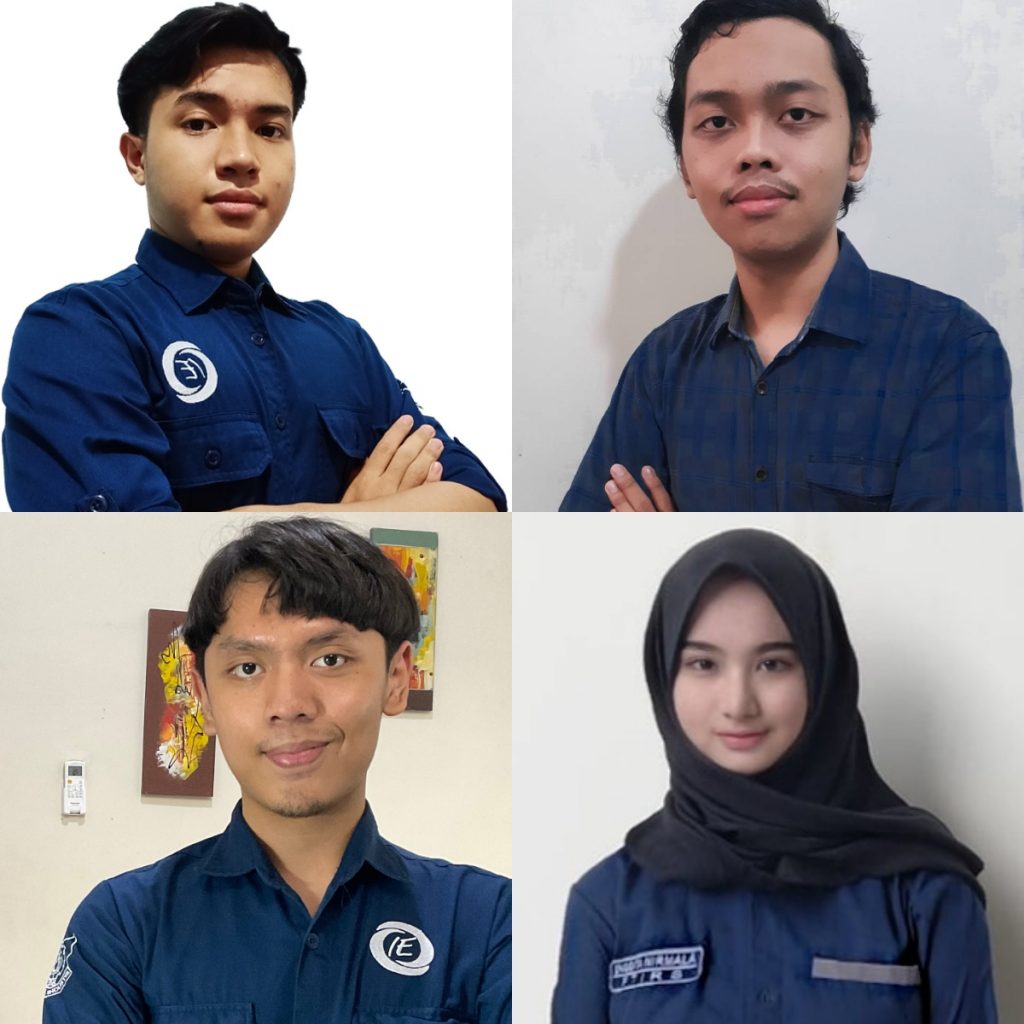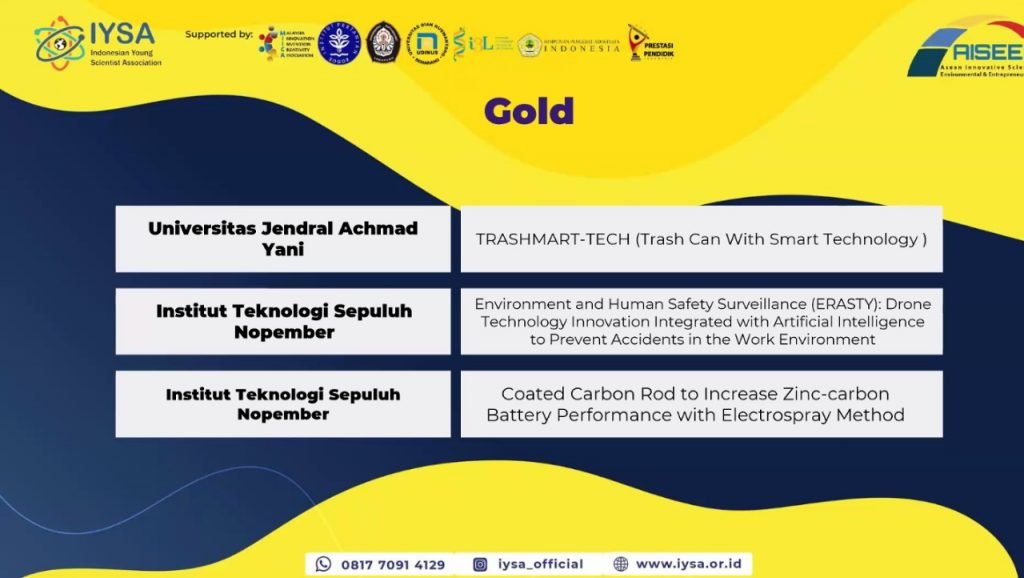ITS Students’ Innovation Helps Reduce Work Accidents

Hammam Dhiyaurrahman Yusdin shows the ERASTY drone prototype designed by his team that won the gold medal.
ITS Campus, ITS News – The high rate of work accidents in the world is caused by workers’ low awareness about Occupational Health and Safety (K3). Seeing this problem, a team of students from the Sepuluh Nopember Institute of Technology (ITS) created a solution to avoid potential work accidents by creating an artificial intelligence-based drone (drone) innovation.
They are Hammam Dhiyaurrahman Yusdin, Muhammad Adrian Fadhilah, and Inggita Nirmala Putri Wardhana from the Industrial and System Engineering Department, and Alif Aditya Wicaksono from the Computer Engineering Department. Joined in the ITS Bramunastya Team, they succeeded in creating a work environment surveillance drone called Environment and Human Safety Surveillance (ERASTY).

(from above, left to right) Muhammad Adrian Fadhilah, Alif Aditya Wicaksono, Hammam Dhiyaurrahman Yusdin, and Inggita Nirmala Putri Wardhana who designed ERASTY
Hammam, as the team leader explained, this drone is integrated with AI, which uses the algorithm name You Only Look Once (YOLO) and is equipped with a series of Arduino sensors. This technology is used to detect unsafe action indicators from workers’ Protective Equipment (PPE) such as vests, long-sleeved shirts, helmets, goggles, and gloves.
In more detail, said Hammam, ERASTY is also equipped with sensors that can be used to detect the threat of fire and dangerous gases. Not only that, a proximity sensor is attached to the drone so that it can automatically detect potential collisions with objects. “We call it the Smart Collision feature to prevent drones from obstructing the work environment,” he said.
This Gresik-born student added the way ERASTY works starts from the hardware system. The hardware in the form of a series of sensors will receive a signal from the work environment. Then the captured password will be sent to the software, which will determine the potential hazards in the work environment.
If ERASTY identifies unsafe actions or conditions, a warning system will be activated to remind workers of the hazards. “From the identification process, the scan results will be received and stored by the computer operator,” explained Hammam further.
Hammam said, to make ERASTY’s AI detect an object, his team must first train the program by entering the relevant data set. In ERASTY’s case, one of the data entered was photographs of PPE. “The longer the training time, the higher and faster the detection accuracy,” he said.
During the 14 days of training, Hammam said the average duration of ERASTY to identify objects was 410.1 milliseconds. Furthermore, the highest level of accuracy that can be achieved in identifying ERASTY objects is 90.87 percent. Simultaneously, the fastest gas capture time is obtained in one-second duration with a gas source distance of 10 centimeters.
Hammam claims the main advantages of the drone innovation created by his team are the high level of AI accuracy and the flexibility of the drone in conducting surveillance. “Drones can carry out surveillance in areas that are difficult to reach by conventional surveillance equipment such as CCTV,” he added.

When it was announced, the Bramunastya ITS team won a gold medal in the Innovative Science category at AISEEF 2021
The innovation of Dr. Adithya Sudiarno ST MT’s guidance team finally won a gold medal at the 2021 Asean Innovative Science Environmental and Entrepreneur Fair (AISEEF) event held by the Indonesian Young Scientist Association (IYSA) on 23 February. In this competition, they became one of the best out of 70 other international papers in the Innovative Science category.
When asked about the innovation development plan, Hammam said he plans to adapt ERASTY technology to robots. The job of the robot is to act as a guide in the work environment. “We take advantage of existing innovations in ERASTY and add several new features,” he added.
In the future, Hammam hopes that drones will become a technology that can be used en masse. According to him, with the Internet of Things (IoT) technology and the 4.0 industrial revolution, drones have many advantages in their implementation. “The current rapid development of drones also reinforces it,” he concluded. (ITS Public Relations)
Reporter: ion15
Related News
-
ITS Lecturer Introduces Madurese Culture to the International Stage
ITS Campus, ITS News — Continuing to show local wisdom to the world community, this time a lecturer from the Department
March 04, 2021 17:03 -
ITS Researchers Remind TKDN is Crucial for Economic Independence
ITS Campus, ITS News — The Domestic Component Level (TKDN) is the key to restoring the glory of the Indonesian
March 04, 2021 17:03 -
Strengthening Quality Education, ITS Professor Develops Adaptive Technology for Students
ITS Campus, ITS News — Differences in students’ abilities in understanding lessons are often a challenge for teachers in the classroom.
March 04, 2021 17:03 -
ITS Graduates Create Reverse Logistics Model for PET Plastic Waste Recycling
ITS Campus, ITS News — Doctoral graduate from the Department of Industrial and Systems Engineering, Sepuluh Nopember Institute of Technology (ITS) Dr. Yuniar
March 04, 2021 17:03
